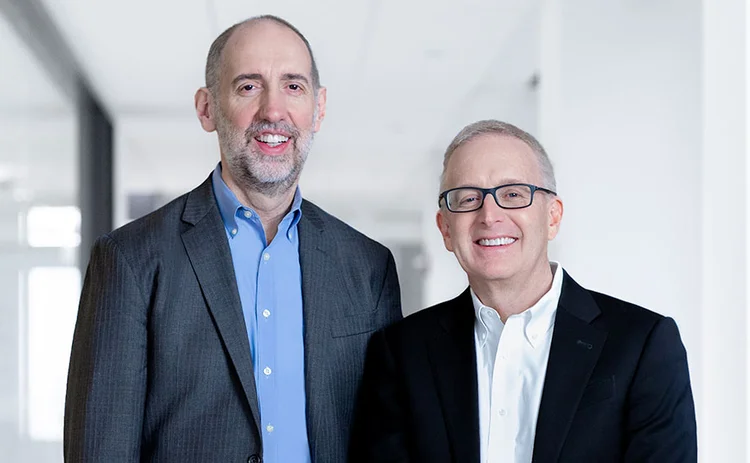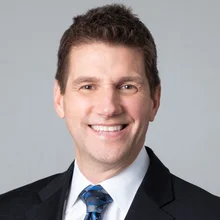
Clearing house of the year: OCC
Risk Awards 2022: Risk management reforms help clearing house weather meme stock volatility

It’s been a rollercoaster ride for financial markets over the past two years, with plunging lows followed by a rapid recovery. The same could be said for the fortunes of OCC.
Towards the end of 2019, the US clearing house faced the ignominy of a $20 million fine from US regulators for a litany of operational and risk management failures.
Craig Donohue, the chair of the clearing house, admits that the previous management team “overachieved” at being the “lowest cost clearing provider in the industry”.
Since then OCC, which clears options contracts for 16 different exchanges, has overhauled its models, technology, and senior executives. The clearing house has also worked to change its corporate culture from cost efficiency to robust risk management.
The effort has paid off.
When retail investors ganged up to buy shares and derivatives in so-called meme stocks in January 2021, sparking a violent surge in prices and volumes, OCC’s technology and risk methodology held firm, market participants report.
“Implied volatility levels went through the roof,” says a clearing executive at a large US bank. “We saw record options volumes, and despite that the whole system worked great. I feel much more confident about options market structure and OCC played an important part as one of the biggest options clearing houses.”
The work required to build up that resilience was, in part, a response to a damning report released by the Securities and Exchange Commission which accompanied the 2019 fine for OCC. The report alleged that up to May 2017, the clearing house had made a total of 24 changes to key rules related to its default fund, margin policy, default management and other areas without seeking approval of regulators. The clearing house failed to adequately account for extreme market moves in its stress-testing, including the liquidation costs of a portfolio as spreads widen during market volatility.
Away from the SEC report, the clearing house also maintained a less rigorous default guarantee than many of its peers during that time. It held a Cover 1 standard – namely, guaranteeing that it could withstand the default of its single largest clearing member. By contrast, most large derivatives clearing houses have committed to withstanding the simultaneous default of their two largest clearing members for many years.
Donohue, who joined OCC in 2014, admits to shortcomings. “Not enough was done to take stock of how we needed to change in order to meet the new, heightened expectations for market participants, and certainly, regulators and government policy-makers,” he says.

The overhaul began in the boardroom, where the clearer cleared out many of its C-suite executives. In came a new chief executive officer, chief operating officer, chief investment officer and head of financial risk – some poached from Donohue’s old shop CME Group. In 2018, OCC launched its financial safeguards framework programme, a multi-year initiative to address regulatory concerns and improve model standards.
That same year, the clearing house moved to Cover 2, while also decoupling margins from default fund contributions, in order to avoid calling too much liquidity from members at the same time. Eurex changed its own policy to decouple default fund contributions and aggregate margin levels last year.
At the end of 2020, OCC addressed regulators’ concerns over stress-testing, adding new stress scenarios of extreme moves, including for volatility index futures. It also addressed their concerns over wrong-way risk related to the posting of self-referencing securities as collateral for options transactions.
On the technology side, OCC launched its Renaissance initiative in January 2019 – a commitment to improving the back end of the clearing house, with an ambition to move to the cloud. While it has not yet received approval from regulators to go to the cloud, the clearer has worked on improving its technology to sustain massive volumes.
Scot Warren, chief operating officer at OCC, says the clearing house “rigorously” tests volumes at 2.5 times the historical peaks to make sure it is as resilient as possible.
“We’ve designed and built that capacity into the system and added people and processes to support it,” he says. “We invested in new hardware and infrastructure; we re-engineered processes to shorten processing cycles.”
Stressful times
The changes to technology and risk practices helped the clearing house weather the storm of volatility linked to meme stocks in January and later in the year, and the broader hike in volumes seen after the Covid-19 pandemic began.
With OCC’s annual options volumes holding steady between 4 billion and 5 billion contracts for most of the past decade, 2020 saw contracts hit 7.5 billion, and 9.93 billion in 2021. In January 2021, equity options volumes were up 70% against the same month the previous year.
Among the sources that Risk.net spoke to for this article, none refuted the claim that the clearing house was resilient in the face of extraordinary volumes. Two sources point to minor processing delays during peak volume days in January, but note that this is a good performance during high levels of market volatility.
Dale Michaels, chief financial risk officer at OCC, acknowledges that the clearer has processing issues from time to time. During the periods of high volatility in March 2020 and January 2021, he says OCC deliberately delayed processing to allow clearing firms to submit trades and give-ups because their systems were “backed up”.
Technology aside, sources singled out the clearing house’s risk model for praise. OCC uses a Monte Carlo-based model dubbed Stans, or system for theoretical analysis and numerical simulations. The model is more conservative than historical simulation value-at-risk models seen at some other clearing houses as it uses an expected shortfall approach, also known as conditional VAR.
We felt that our interest in being strong risk managers and making sure we have the appropriate eye on resilience needed to have a dollar and cent impact
John Davidson, OCC
A traditional VAR model at a futures and options clearing house would take a target confidence interval – 99%, say – and apply it to a host of historical data, setting margin levels that would cover losses in these cases. Conditional VAR, also in use at LCH and Nodal, requires margin that would cover the average amount of portfolio losses seen in that remaining 1% of trading days.
The model assumes it will take two days to liquidate a portfolio of options, one extra day compared with its US competitors, leading to higher margins. This holding period also applies to the extreme stress scenarios used to calibrate the default fund, which include the 2008 financial crisis and Black Monday in 1987.
Michaels says the model helped the clearing house build up appropriate levels of margin in advance of recent periods of upheaval, notably in January 2021 when stocks in GameStop, AMC Entertainment and Nokia became the target of a retail feeding frenzy.
“Our model anticipated the volatility that was forthcoming, both in March of 2020 where our margins started to increase a month before the volatility really hit, or even into the meme stocks in January 2021,” says Michaels. “The margins we held on those [stocks] were very high and protected against the additional movements that we saw forthcoming.”
On January 25, margin for a long position was aimed to cover a 41% decline in a stock’s price, while at 70% to cover an increase. As GameStop’s share price increased by 300% between January 26 and 27, short margins were increased to 109% on the morning of January 27. Margins were further increased to 155% on January 28 and then 185% on January 29.
OCC fully covered long positions during this period, which was not easy given the wild whipsawing of the stock. While there were significant margin breaches for short positions, sources did not criticise OCC’s margining given the extraordinary volatility and the lack of warning preceding it.
Skin in the game
Another strand of OCC’s reforms is in executive pay. The clearing house has taken an innovative approach to aligning the incentives of its management with the goals of the broader industry by putting executive compensation alongside member funds in the default fund.
This change, which was implemented in 2020, was partly put in place to help encourage the reform of the CCP’s risk culture, to reinforce the idea that those at the top were prioritising robust risk management.
“We felt that our interest in being strong risk managers and making sure we have the appropriate eye on resilience needed to have a dollar and cent impact,” says John Davidson, OCC’s chief executive. “Having that key alignment of incentives is a fundamental part of the of the culture of OCC now.”

The change of focus away from cost efficiency and toward risk awareness had a corollary effect: the clearing house was forced to increase its fees in 2019. The decision – perhaps unsurprisingly – proved unpopular with some members. However, OCC has since been able to reduce its fees; indeed, clearing was free for a time at the end of 2021.
Another innovation by OCC is a $1 billion credit line with three separate pension funds, to avoid the wrong-way risk that can occur during a default. This is because most clearing houses normally have default fund contributions from members in addition to loan facilities with those same members.
“We don’t want to have what we call a ‘wrong-way stress’, where we’re calling from cash from the same folks that are in need of cash,” says Michaels.
OCC still has work to do. Beyond planned work on its model and the move to the cloud, several member sources tell Risk.net that communication with members is not adequate. They have called for a more open format of discussions with constant communication between the clearing house that extends beyond quarterly meetings of the Financial Risk Advisory Council.
OCC’s Warren says that the clearing house does keep an open line of communication with members but that it wants to improve.
“We’re committed to increasing engagement, gathering the right level of feedback and bringing people into that process and being very transparent,” says Warren.
Only users who have a paid subscription or are part of a corporate subscription are able to print or copy content.
To access these options, along with all other subscription benefits, please contact info@risk.net or view our subscription options here: http://subscriptions.risk.net/subscribe
You are currently unable to print this content. Please contact info@risk.net to find out more.
You are currently unable to copy this content. Please contact info@risk.net to find out more.
Copyright Infopro Digital Limited. All rights reserved.
You may share this content using our article tools. Printing this content is for the sole use of the Authorised User (named subscriber), as outlined in our terms and conditions - https://www.infopro-insight.com/terms-conditions/insight-subscriptions/
If you would like to purchase additional rights please email info@risk.net
Copyright Infopro Digital Limited. All rights reserved.
You may share this content using our article tools. Copying this content is for the sole use of the Authorised User (named subscriber), as outlined in our terms and conditions - https://www.infopro-insight.com/terms-conditions/insight-subscriptions/
If you would like to purchase additional rights please email info@risk.net
More on Awards
Joining the dots: banks leverage tech advancements for the future of regulatory reporting
The continued evolution of regulatory frameworks is creating mounting challenges for capital markets firms in achieving comprehensive and cost-effectiveawa compliance reporting. Regnology discusses how firms are starting to use a synthesis of emerging…
Markets Technology Awards 2024 winners' review
Vendors spy opportunity in demystifying and democratising – opening up markets and methods to new users
Derivatives house of the year: JP Morgan
Risk Awards 2024: Response to regional banking crisis went far beyond First Republic
Risk Awards 2024: The winners
JP Morgan wins derivatives house, lifetime award for El Karoui, Barclays wins rates
Best product for capital markets: Murex
Asia Risk Awards 2023
Technology vendor of the year: Murex
Asia Risk Awards 2023
Best structured products support system: Murex
Asia Risk Awards 2023
Energy Risk Asia Awards 2023: the winners
Winning firms demonstrate resiliency and robust risk management amid testing times
Most read
- Top 10 operational risks for 2024
- Top 10 op risks: third parties stoke cyber risk
- Japanese megabanks shun internal models as FRTB bites







